-
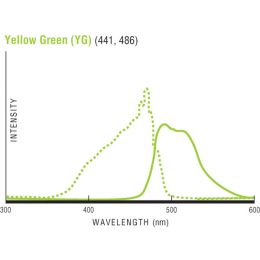 Fluoresbrite® YG Microspheres 45.0µmCatalog Number 18242-2
Fluoresbrite® YG Microspheres 45.0µmCatalog Number 18242-2Fluoresbrite® Yellow Green Microspheres have excitation and emission spectra similar to FITC with excitation maxima of 441nm and emission maxima at 485nm. They are one of the brightest microspheres available at this wavelength and are used extensively in phagocytosis studies, flow cytometry and diagnostic assays.
-
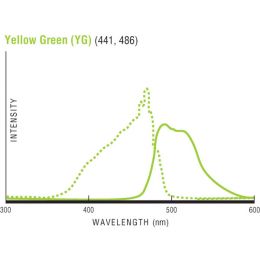 Fluoresbrite® YG Microspheres 20.0µmCatalog Number 19096-2
Fluoresbrite® YG Microspheres 20.0µmCatalog Number 19096-2Fluoresbrite® Yellow Green Microspheres have excitation and emission spectra similar to FITC with excitation maxima of 441nm and emission maxima at 485nm. They are one of the brightest microspheres available at this wavelength and are used extensively in phagocytosis studies, flow cytometry and diagnostic assays.
-
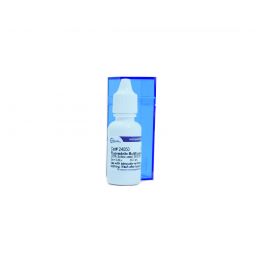 Fluoresbrite® Multifluorescent Microspheres 0.20µmCatalog Number 24050-5
Fluoresbrite® Multifluorescent Microspheres 0.20µmCatalog Number 24050-5Polysciences offers multifluorescent microspheres in three sizes. Each microsphere is dyed with three different fluorescent dyes with excitation maxima of 377, 517 and 588nm, and emission maxima of 479, 546 and 612nm, respectively. These microspheres are packaged as 2.5% aqueous suspensions.
-
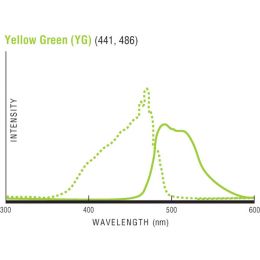 Biotin Fluoresbrite® YG Microspheres, 2.0µmCatalog Number 24173
Biotin Fluoresbrite® YG Microspheres, 2.0µmCatalog Number 24173Biotin covalently coupled to Fluoresbrite® YG fluorescent microspheres. Binding capacity available upon request.
-
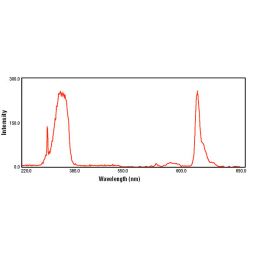 Fluoresbrite® Europium (Eu) Carboxylate Microspheres 0.10µmCatalog Number 25488
Fluoresbrite® Europium (Eu) Carboxylate Microspheres 0.10µmCatalog Number 25488Polysciences offers europium chelate microspheres in diamaters of 0.1µm, 0.2µm and 0.3µm to address the needs of individual assays, including immunochromatographic and microwell-based formats. Our europium products offer extremely bright fluorescence (excitation: 365nm; emission: 610nm) and exceptional stability, in addition to well-functionalized carboxylated surfaces for the covalent attachment of ligand.
-
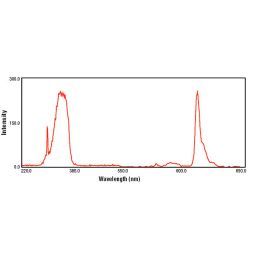 Fluoresbrite® Europium (Eu) Carboxylate Microspheres 0.20µmCatalog Number 25489
Fluoresbrite® Europium (Eu) Carboxylate Microspheres 0.20µmCatalog Number 25489Polysciences offers europium chelate microspheres in diamaters of 0.1µm, 0.2µm and 0.3µm to address the needs of individual assays, including immunochromatographic and microwell-based formats. Our europium products offer extremely bright fluorescence (excitation: 365nm; emission: 610nm) and exceptional stability, in addition to well-functionalized carboxylated surfaces for the covalent attachment of ligand.
-
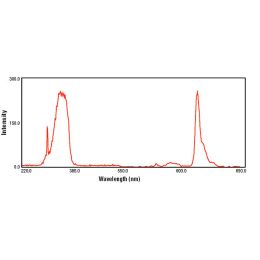 Fluoresbrite® Europium (Eu) Carboxylate Microspheres 0.30µmCatalog Number 25490
Fluoresbrite® Europium (Eu) Carboxylate Microspheres 0.30µmCatalog Number 25490Polysciences offers europium chelate microspheres in diamaters of 0.1µm, 0.2µm and 0.3µm to address the needs of individual assays, including immunochromatographic and microwell-based formats. Our europium products offer extremely bright fluorescence (excitation: 365nm; emission: 610nm) and exceptional stability, in addition to well-functionalized carboxylated surfaces for the covalent attachment of ligand.
-
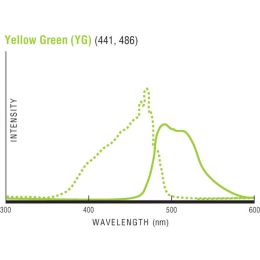 Streptavidin Fluoresbrite® YG Microspheres, 6.0µmCatalog Number 24157
Streptavidin Fluoresbrite® YG Microspheres, 6.0µmCatalog Number 24157Polysciences' streptavidin coated beads can be used in conjunction with a biotinylated ligand, antibody, DNA or RNA to form a bridge to the microsphere, providing the simple addition of a solid support. The streptavidin-biotin bond strength approaches that of a covalent bond, with an association constant (Ka 10^15 Mol-1) in an aqueous solution. This makes the bond not only essentially irreversible, but also supplies an interaction of high affinity and specificity.
-
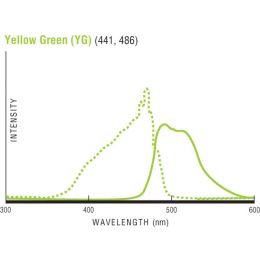 Streptavidin Fluoresbrite® YG Microspheres, 2.0µmCatalog Number 24159
Streptavidin Fluoresbrite® YG Microspheres, 2.0µmCatalog Number 24159Polysciences' streptavidin coated beads can be used in conjunction with a biotinylated ligand, antibody, DNA or RNA to form a bridge to the microsphere, providing the simple addition of a solid support. The streptavidin-biotin bond strength approaches that of a covalent bond, with an association constant (Ka 10^15 Mol-1) in an aqueous solution. This makes the bond not only essentially irreversible, but also supplies an interaction of high affinitiy and specificity.
-
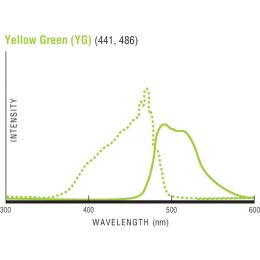 Streptavidin Fluoresbrite® YG Microspheres, 1.0µmCatalog Number 24161
Streptavidin Fluoresbrite® YG Microspheres, 1.0µmCatalog Number 24161Polysciences' streptavidin coated beads can be used in conjunction with a biotinylated ligand, antibody, DNA or RNA to form a bridge to the microsphere, providing the simple addition of a solid support. The streptavidin-biotin bond strength approaches that of a covalent bond, with an association constant (Ka 10^15 Mol-1) in an aqueous solution. This makes the bond not only essentially irreversible, but also supplies an interaction of high affinitiy and specificity.
-
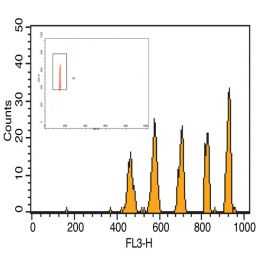 QuantumPlex™ SP Streptavidin 4.4µmCatalog Number BLI214A
QuantumPlex™ SP Streptavidin 4.4µmCatalog Number BLI214AThe microsphere populations in the QuantumPlex™five-bead kits are encoded with different intensities of Starfire Red™, and microspheres in our ten-bead kits are distinguished by both fluorescence intensity and size. Starfire Red™ is a fluorescent dye with unique characteristics that make it ideal for multiplexing applications. The dye's broad excitation band allows it to be excited at a number of wavelengths, and it emits in the FL3 channel (685nm) with very little carry-over into FL1 or FL2, leaving othe detectors available for determination of positive binding events via common reporters such as FITC and PE.
-
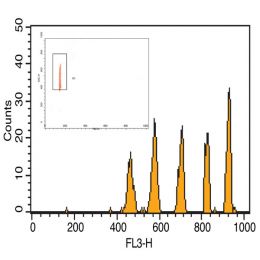 QuantumPlex™ Streptavidin 4.4µmCatalog Number BLI215A
QuantumPlex™ Streptavidin 4.4µmCatalog Number BLI215AThe microsphere populations in the QuantumPlex™five-bead kits are encoded with different intensities of Starfire Red™, and microspheres in our ten-bead kits are distinguished by both fluorescence intensity and size. Starfire Red™ is a fluorescent dye with unique characteristics that make it ideal for multiplexing applications. The dye's broad excitation band allows it to be excited at a number of wavelengths, and it emits in the FL3 channel (685nm) with very little carry-over into FL1 or FL2, leaving othe detectors available for determination of positive binding events via common reporters such as FITC and PE.
-
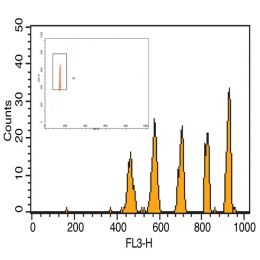 QuantumPlex™ SP Streptavidin 5.5µmCatalog Number BLI217A
QuantumPlex™ SP Streptavidin 5.5µmCatalog Number BLI217AThe microsphere populations in the QuantumPlex™five-bead kits are encoded with different intensities of Starfire Red™, and microspheres in our ten-bead kits are distinguished by both fluorescence intensity and size. Starfire Red™ is a fluorescent dye with unique characteristics that make it ideal for multiplexing applications. The dye's broad excitation band allows it to be excited at a number of wavelengths, and it emits in the FL3 channel (685nm) with very little carry-over into FL1 or FL2, leaving othe detectors available for determination of positive binding events via common reporters such as FITC and PE.
-
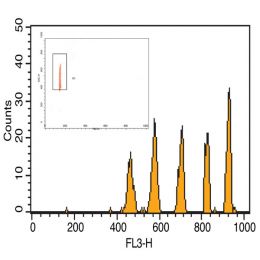 QuantumPlex™ Streptavidin 5.5µmCatalog Number BLI218A
QuantumPlex™ Streptavidin 5.5µmCatalog Number BLI218AThe microsphere populations in the QuantumPlex™five-bead kits are encoded with different intensities of Starfire Red™, and microspheres in our ten-bead kits are distinguished by both fluorescence intensity and size. Starfire Red™ is a fluorescent dye with unique characteristics that make it ideal for multiplexing applications. The dye's broad excitation band allows it to be excited at a number of wavelengths, and it emits in the FL3 channel (685nm) with very little carry-over into FL1 or FL2, leaving othe detectors available for determination of positive binding events via common reporters such as FITC and PE.
-
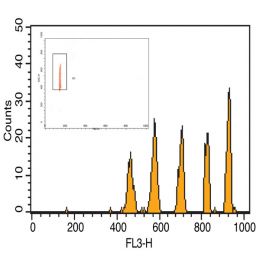 QuantumPlex™ Streptavidin 4.4 & 5.5µmCatalog Number BLI219A
QuantumPlex™ Streptavidin 4.4 & 5.5µmCatalog Number BLI219AThe microsphere populations in the QuantumPlex™five-bead kits are encoded with different intensities of Starfire Red™, and microspheres in our ten-bead kits are distinguished by both fluorescence intensity and size. Starfire Red™ is a fluorescent dye with unique characteristics that make it ideal for multiplexing applications. The dye's broad excitation band allows it to be excited at a number of wavelengths, and it emits in the FL3 channel (685nm) with very little carry-over into FL1 or FL2, leaving othe detectors available for determination of positive binding events via common reporters such as FITC and PE.
-
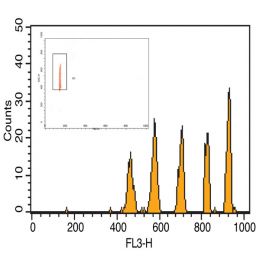 QuantumPlex™ SP Carboxyl 4.4µmCatalog Number BLI234A
QuantumPlex™ SP Carboxyl 4.4µmCatalog Number BLI234AThe microsphere populations in the QuantumPlex™five-bead kits are encoded with different intensities of Starfire Red™, and microspheres in our ten-bead kits are distinguished by both fluorescence intensity and size. Starfire Red™ is a fluorescent dye with unique characteristics that make it ideal for multiplexing applications. The dye's broad excitation band allows it to be excited at a number of wavelengths, and it emits in the FL3 channel (685nm) with very little carry-over into FL1 or FL2, leaving othe detectors available for determination of positive binding events via common reporters such as FITC and PE.
-
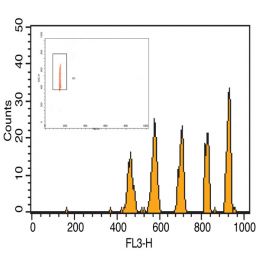 QuantumPlex™ Carboxyl 4.4µmCatalog Number BLI235A
QuantumPlex™ Carboxyl 4.4µmCatalog Number BLI235AThe microsphere populations in the QuantumPlex™five-bead kits are encoded with different intensities of Starfire Red™, and microspheres in our ten-bead kits are distinguished by both fluorescence intensity and size. Starfire Red™ is a fluorescent dye with unique characteristics that make it ideal for multiplexing applications. The dye's broad excitation band allows it to be excited at a number of wavelengths, and it emits in the FL3 channel (685nm) with very little carry-over into FL1 or FL2, leaving othe detectors available for determination of positive binding events via common reporters such as FITC and PE.
-
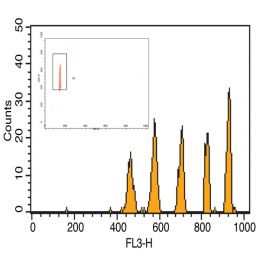 QuantumPlex™ SP Carboxyl 5.5µmCatalog Number BLI237A
QuantumPlex™ SP Carboxyl 5.5µmCatalog Number BLI237AThe microsphere populations in the QuantumPlex™five-bead kits are encoded with different intensities of Starfire Red™, and microspheres in our ten-bead kits are distinguished by both fluorescence intensity and size. Starfire Red™ is a fluorescent dye with unique characteristics that make it ideal for multiplexing applications. The dye's broad excitation band allows it to be excited at a number of wavelengths, and it emits in the FL3 channel (685nm) with very little carry-over into FL1 or FL2, leaving othe detectors available for determination of positive binding events via common reporters such as FITC and PE.
-
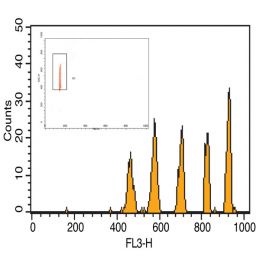 QuantumPlex™ Carboxyl 5.5µmCatalog Number BLI238A
QuantumPlex™ Carboxyl 5.5µmCatalog Number BLI238AThe microsphere populations in the QuantumPlex™five-bead kits are encoded with different intensities of Starfire Red™, and microspheres in our ten-bead kits are distinguished by both fluorescence intensity and size. Starfire Red™ is a fluorescent dye with unique characteristics that make it ideal for multiplexing applications. The dye's broad excitation band allows it to be excited at a number of wavelengths, and it emits in the FL3 channel (685nm) with very little carry-over into FL1 or FL2, leaving othe detectors available for determination of positive binding events via common reporters such as FITC and PE.
-
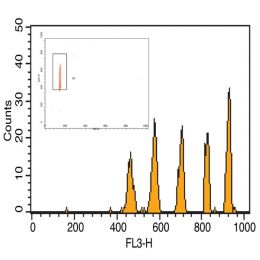 QuantumPlex™ Carboxyl 4.4 & 5.5µmCatalog Number BLI239A
QuantumPlex™ Carboxyl 4.4 & 5.5µmCatalog Number BLI239AThe microsphere populations in the QuantumPlex™five-bead kits are encoded with different intensities of Starfire Red™, and microspheres in our ten-bead kits are distinguished by both fluorescence intensity and size. Starfire Red™ is a fluorescent dye with unique characteristics that make it ideal for multiplexing applications. The dye's broad excitation band allows it to be excited at a number of wavelengths, and it emits in the FL3 channel (685nm) with very little carry-over into FL1 or FL2, leaving othe detectors available for determination of positive binding events via common reporters such as FITC and PE.
-
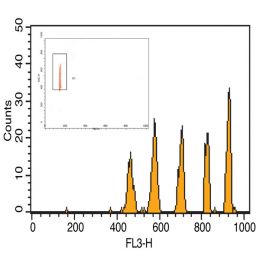 QuantumPlex™M Carboxyl ~6µm MagneticCatalog Number BLI250A
QuantumPlex™M Carboxyl ~6µm MagneticCatalog Number BLI250AThe microsphere populations in the QuantumPlex™M five-bead kits are encoded with different intensities of Starfire Red™. Starfire Red™ is a fluorescent dye with unique characteristics that make it ideal for multiplexing applications. The dye's broad excitation band allows it to be excited at a number of wavelengths, and it emits in the FL3 channel (685nm) with very little carry-over into FL1 or FL2, leaving othe detectors available for determination of positive binding events via common reporters such as FITC and PE.
-
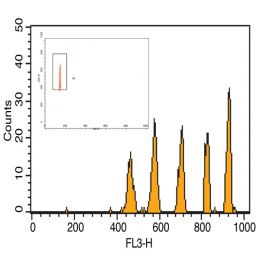 QuantumPlex™M SP Carboxyl ~6µm MagneticCatalog Number BLI251A
QuantumPlex™M SP Carboxyl ~6µm MagneticCatalog Number BLI251AThe microsphere populations in the QuantumPlex™M five-bead kits are encoded with different intensities of Starfire Red™. Starfire Red™ is a fluorescent dye with unique characteristics that make it ideal for multiplexing applications. The dye's broad excitation band allows it to be excited at a number of wavelengths, and it emits in the FL3 channel (685nm) with very little carry-over into FL1 or FL2, leaving othe detectors available for determination of positive binding events via common reporters such as FITC and PE.
-
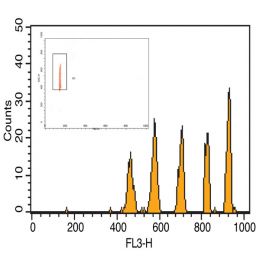 QuantumPlex™M Streptavidin ~6µm MagneticCatalog Number BLI252A
QuantumPlex™M Streptavidin ~6µm MagneticCatalog Number BLI252AThe microsphere populations in the QuantumPlex™M five-bead kits are encoded with different intensities of Starfire Red™. Starfire Red™ is a fluorescent dye with unique characteristics that make it ideal for multiplexing applications. The dye's broad excitation band allows it to be excited at a number of wavelengths, and it emits in the FL3 channel (685nm) with very little carry-over into FL1 or FL2, leaving othe detectors available for determination of positive binding events via common reporters such as FITC and PE.
-
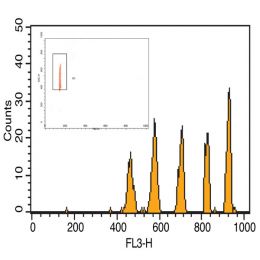 QuantumPlex™M SP Streptavidin ~6µm MagneticCatalog Number BLI253A
QuantumPlex™M SP Streptavidin ~6µm MagneticCatalog Number BLI253AThe microsphere populations in the QuantumPlex™M five-bead kits are encoded with different intensities of Starfire Red™. Starfire Red™ is a fluorescent dye with unique characteristics that make it ideal for multiplexing applications. The dye's broad excitation band allows it to be excited at a number of wavelengths, and it emits in the FL3 channel (685nm) with very little carry-over into FL1 or FL2, leaving othe detectors available for determination of positive binding events via common reporters such as FITC and PE.
-
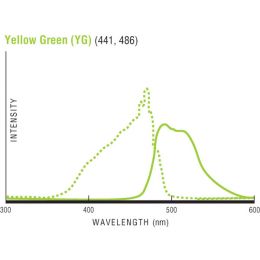 Fluoresbrite® YG Microspheres 0.10µmCatalog Number 17150
Fluoresbrite® YG Microspheres 0.10µmCatalog Number 17150Fluoresbrite® Yellow Green Microspheres have excitation and emission spectra similar to FITC with excitation maxima of 441nm and emission maxima at 485nm. They are one of the brightest microspheres available at this wavelength and are used extensively in phagocytosis studies, flow cytometry and diagnostic assays.
-
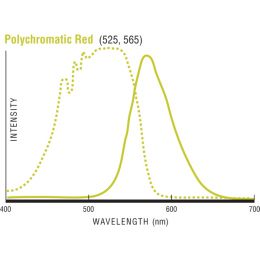 Fluoresbrite® Polychromatic Red Microspheres 1.0µmCatalog Number 18660
Fluoresbrite® Polychromatic Red Microspheres 1.0µmCatalog Number 18660Fluoresbrite® Polychromatic Red Microspheres will fluoresce in different colors, depending on the light source and filters used. When viewed under a UV light source, the beads will appear as vivid orange. Microscopic viewing using a 475-490nm filter shows an extremely bright red fluorescence, while use of a 545-610nm filter yields a yellow fluorescence with excitation maxima of 491nm and 512nm and emission maxima at 554nm.
-
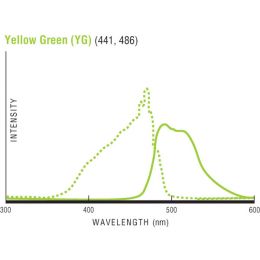 Fluoresbrite® YG Carboxylate Microspheres 10.00µmCatalog Number 18142
Fluoresbrite® YG Carboxylate Microspheres 10.00µmCatalog Number 18142Fluoresbrite® carboxylate microspheres are fluorescent monodispersed polystyrene microspheres that have carboxylate groups on their surfaces which can be activated for the covalent coupling of proteins. Polysciences’ Fluoresbrite® particles are used worldwide in phagocytosis and neural retrograde transport studies, and as markers for cell bound antigens.
-
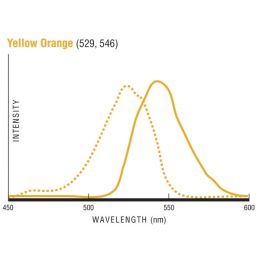 Fluoresbrite® YO Carboxylate Microspheres 0.20µmCatalog Number 19391
Fluoresbrite® YO Carboxylate Microspheres 0.20µmCatalog Number 19391Fluoresbrite® carboxylate microspheres are fluorescent monodispersed polystyrene microspheres that have carboxylate groups on their surfaces which can be activated for the covalent coupling of proteins. Polysciences’ Fluoresbrite® particles are used worldwide in phagocytosis and neural retrograde transport studies, and as markers for cell bound antigens. These microspheres are packaged as 2.5% aqueous suspensions. YO has limited water solubility, and some leaching may occur with rigorous washing.
-
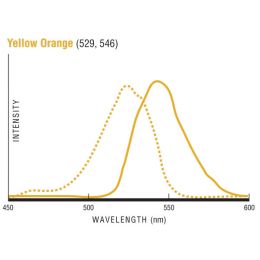 Fluoresbrite® YO Carboxylate Microspheres 1.00µmCatalog Number 18449
Fluoresbrite® YO Carboxylate Microspheres 1.00µmCatalog Number 18449Fluoresbrite® carboxylate microspheres are fluorescent monodispersed polystyrene microspheres that have carboxylate groups on their surfaces which can be activated for the covalent coupling of proteins. Polysciences’ Fluoresbrite® particles are used worldwide in phagocytosis and neural retrograde transport studies, and as markers for cell bound antigens. These microspheres are packaged as 2.5% aqueous suspensions. YO has limited water solubility, and some leaching may occur with rigorous washing.
-
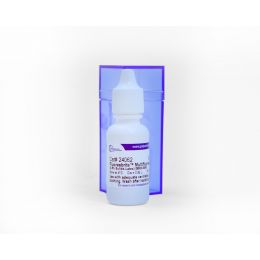 Fluoresbrite® Multifluorescent Microspheres 1.00µmCatalog Number 24062-5
Fluoresbrite® Multifluorescent Microspheres 1.00µmCatalog Number 24062-5Polysciences offers multifluorescent microspheres in three sizes. Each microsphere is dyed with three different fluorescent dyes with excitation maxima of 377, 517 and 588nm, and emission maxima of 479, 546 and 612nm, respectively. These microspheres are packaged as 2.5% aqueous suspensions.
-
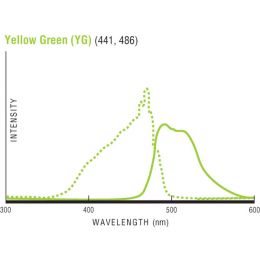 Fluoresbrite® YG Microspheres 1.00µmCatalog Number 17154
Fluoresbrite® YG Microspheres 1.00µmCatalog Number 17154Fluoresbrite® Yellow Green Microspheres have excitation and emission spectra similar to FITC with excitation maxima of 441nm and emission maxima at 485nm. They are one of the brightest microspheres available at this wavelength and are used extensively in phagocytosis studies, flow cytometry and diagnostic assays.
-
 Fluoresbrite® Multifluorescent Microspheres 1.00µmCatalog Number 24062
Fluoresbrite® Multifluorescent Microspheres 1.00µmCatalog Number 24062Polysciences offers multifluorescent microspheres in three sizes. Each microsphere is dyed with three different fluorescent dyes with excitation maxima of 377, 517 and 588nm, and emission maxima of 479, 546 and 612nm, respectively. These microspheres are packaged as 2.5% aqueous suspensions.
-
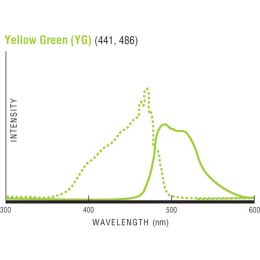 Fluoresbrite® YG Microspheres 0.50µmCatalog Number 17152
Fluoresbrite® YG Microspheres 0.50µmCatalog Number 17152Fluoresbrite® Yellow Green Microspheres have excitation and emission spectra similar to FITC with excitation maxima of 441nm and emission maxima at 485nm. They are one of the brightest microspheres available at this wavelength and are used extensively in phagocytosis studies, flow cytometry and diagnostic assays.
-
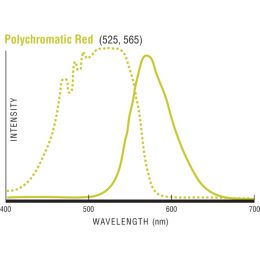 Fluoresbrite® Polychromatic Red Microspheres 0.5µmCatalog Number 19507
Fluoresbrite® Polychromatic Red Microspheres 0.5µmCatalog Number 19507Fluoresbrite® Polychromatic Red Microspheres will fluoresce in different colors, depending on the light source and filters used. When viewed under a UV light source, the beads will appear as vivid orange. Microscopic viewing using a 475-490nm filter shows an extremely bright red fluorescence, while use of a 545-610nm filter yields a yellow fluorescence with excitation maxima of 491nm and 512nm and emission maxima at 554nm.
-
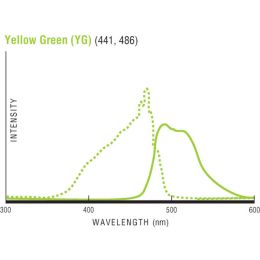 Protein G Fluoresbrite® YG MicrospheresCatalog Number 21107
Protein G Fluoresbrite® YG MicrospheresCatalog Number 21107Protein conjugated microspheres are offered as: antibodies, Protein A, and Protein G covalently coupled to fluorescent YG, non-fluorescent, and blue dyed polystyrene microspheres. Antibody conjugated microspheres can be used to detect trace amounts of specific antigens in solution and to deplete them from solution. Microspheres coupled with Protein A and Protein G will bind to the Fc portion of antibodies raised in most mammals.
-
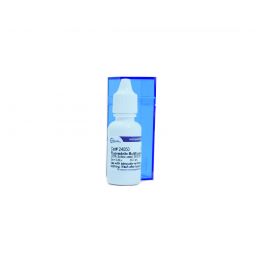 Fluoresbrite® Multifluorescent Microspheres 0.20µmCatalog Number 24050
Fluoresbrite® Multifluorescent Microspheres 0.20µmCatalog Number 24050Polysciences offers multifluorescent microspheres in three sizes. Each microsphere is dyed with three different fluorescent dyes with excitation maxima of 377, 517 and 588nm, and emission maxima of 479, 546 and 612nm, respectively. These microspheres are packaged as 2.5% aqueous suspensions.
-
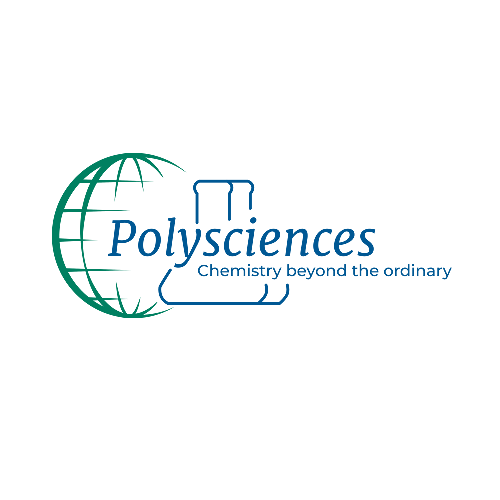 Fluoresbrite® Multifluorescent Microspheres 0.50µmCatalog Number 24054
Fluoresbrite® Multifluorescent Microspheres 0.50µmCatalog Number 24054Polysciences offers multifluorescent microspheres in three sizes. Each microsphere is dyed with three different fluorescent dyes with excitation maxima of 377, 517 and 588nm, and emission maxima of 479, 546 and 612nm, respectively. These microspheres are packaged as 2.5% aqueous suspensions.
-
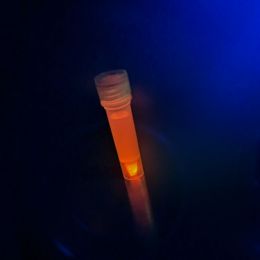 Fluoresbrite® Europium (Eu) Carboxylate Microsphere Sampler PacksCatalog Number BLI21960
Fluoresbrite® Europium (Eu) Carboxylate Microsphere Sampler PacksCatalog Number BLI21960Polysciences offers europium chelate microspheres in a sampler pack (1mL of 0.10μm, 0.20μm, 0.30μm) to address the needs of individual assays, including immunochromatographic and microwell-based formats.
-
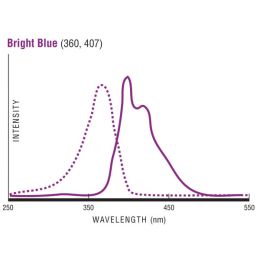 Fluoresbrite® BB Carboxylate Microspheres 0.50µmCatalog Number 18339
Fluoresbrite® BB Carboxylate Microspheres 0.50µmCatalog Number 18339Fluoresbrite® carboxylate microspheres are fluorescent monodispersed polystyrene microspheres that have carboxylate groups on their surfaces which can be activated for the covalent coupling of proteins. Polysciences’ Fluoresbrite® particles are used worldwide in phagocytosis and neural retrograde transport studies, and as markers for cell bound antigens. These microspheres are packaged as 2.5% aqueous suspensions.
-
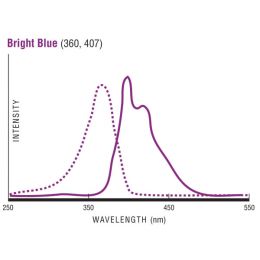 Fluoresbrite® BB Carboxylate Microspheres 0.10µmCatalog Number 19774
Fluoresbrite® BB Carboxylate Microspheres 0.10µmCatalog Number 19774Fluoresbrite® carboxylate microspheres are fluorescent monodispersed polystyrene microspheres that have carboxylate groups on their surfaces which can be activated for the covalent coupling of proteins. Polysciences’ Fluoresbrite® particles are used worldwide in phagocytosis and neural retrograde transport studies, and as markers for cell bound antigens. These microspheres are packaged as 2.5% aqueous suspensions.
-
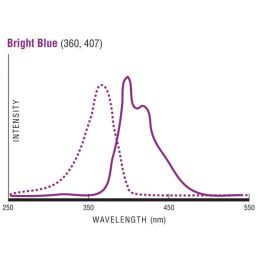 Fluoresbrite® BB Carboxylate Microspheres 1.00µmCatalog Number 17458
Fluoresbrite® BB Carboxylate Microspheres 1.00µmCatalog Number 17458Fluoresbrite® carboxylate microspheres are fluorescent monodispersed polystyrene microspheres that have carboxylate groups on their surfaces which can be activated for the covalent coupling of proteins. Polysciences’ Fluoresbrite® particles are used worldwide in phagocytosis and neural retrograde transport studies, and as markers for cell bound antigens.
-
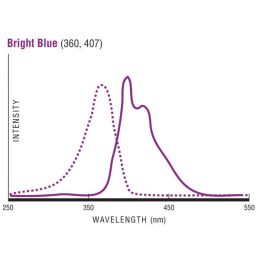 Fluoresbrite® BB Carboxylate Microspheres 1.75µmCatalog Number 17686
Fluoresbrite® BB Carboxylate Microspheres 1.75µmCatalog Number 17686Fluoresbrite® carboxylate microspheres are fluorescent monodispersed polystyrene microspheres that have carboxylate groups on their surfaces which can be activated for the covalent coupling of proteins. Polysciences’ Fluoresbrite® particles are used worldwide in phagocytosis and neural retrograde transport studies, and as markers for cell bound antigens. These microspheres are packaged as 2.5% aqueous suspensions.
-
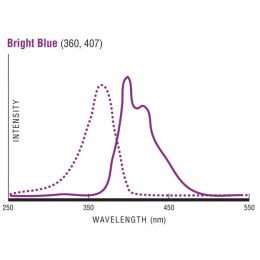 Fluoresbrite® BB Carboxylate Microspheres 6.00µmCatalog Number 19102
Fluoresbrite® BB Carboxylate Microspheres 6.00µmCatalog Number 19102Fluoresbrite® carboxylate microspheres are fluorescent monodispersed polystyrene microspheres that have carboxylate groups on their surfaces which can be activated for the covalent coupling of proteins. Polysciences’ Fluoresbrite® particles are used worldwide in phagocytosis and neural retrograde transport studies, and as markers for cell bound antigens.
-
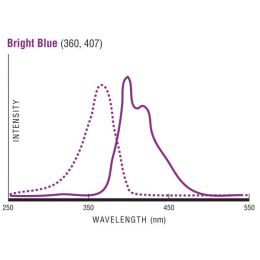 Fluoresbrite® BB Carboxylate Microspheres 10.00µmCatalog Number 19103
Fluoresbrite® BB Carboxylate Microspheres 10.00µmCatalog Number 19103Fluoresbrite® carboxylate microspheres are fluorescent monodispersed polystyrene microspheres that have carboxylate groups on their surfaces which can be activated for the covalent coupling of proteins. Polysciences’ Fluoresbrite® particles are used worldwide in phagocytosis and neural retrograde transport studies, and as markers for cell bound antigens. These microspheres are packaged as 2.5% aqueous suspensions.
-
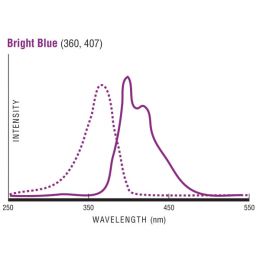 Fluoresbrite® BB Carboxylate Microspheres 0.05µmCatalog Number 19773
Fluoresbrite® BB Carboxylate Microspheres 0.05µmCatalog Number 19773Fluoresbrite® carboxylate microspheres are fluorescent monodispersed polystyrene microspheres that have carboxylate groups on their surfaces which can be activated for the covalent coupling of proteins. Polysciences’ Fluoresbrite® particles are used worldwide in phagocytosis and neural retrograde transport studies, and as markers for cell bound antigens. These microspheres are packaged as 2.5% aqueous suspensions.
-
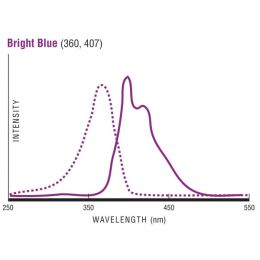 Fluoresbrite® BB Carboxylate Microspheres 4.50µmCatalog Number 18340
Fluoresbrite® BB Carboxylate Microspheres 4.50µmCatalog Number 18340Fluoresbrite® carboxylate microspheres are fluorescent monodispersed polystyrene microspheres that have carboxylate groups on their surfaces which can be activated for the covalent coupling of proteins. Polysciences’ Fluoresbrite® particles are used worldwide in phagocytosis and neural retrograde transport studies, and as markers for cell bound antigens. These microspheres are packaged as 2.5% aqueous suspensions.
-
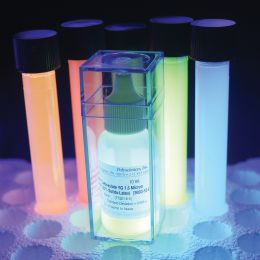 Fluoresbrite® Carboxylate Color Range Kit IICatalog Number 19839
Fluoresbrite® Carboxylate Color Range Kit IICatalog Number 19839Kit contains 1ml each of 0.50µm Fluoresbrite® monodisperse microspheres (2.5% solids in water) containing dyes with these excitation maxima: 273nm, 360nm, 441nm, 529nm, 641nm and 763nm.
Components of this kit are also available individually.
-
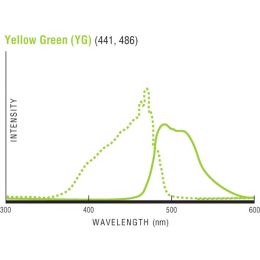 Fluoresbrite® YG Carboxylate Size Range Kit ICatalog Number 21636
Fluoresbrite® YG Carboxylate Size Range Kit ICatalog Number 21636Polysciences’ Size Range Kits allow you to evaluate which fluorescent particle size performs optimally for your specific application. These yellow green (YG) beads are economically packaged in 1ml volumes.
Kit contains 1ml of Fluoresbrite® monodisperse microspheres (2.5% solids in water) for each of these nominal sizes: 0.10µm, 0.20µm, 0.50µm, 0.75µm and 1.0µm.
-
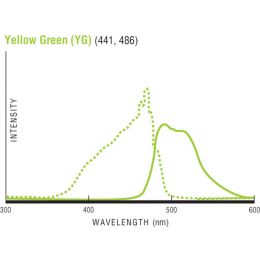 Fluoresbrite® YG Carboxylate Size Range Kit IICatalog Number 21637
Fluoresbrite® YG Carboxylate Size Range Kit IICatalog Number 21637Polysciences’ Size Range Kits allow you to evaluate which fluorescent particle size performs optimally for your specific application. These yellow green (YG) beads are economically packaged in 1ml volumes.
Kit contains 1ml of Fluoresbrite® monodisperse microspheres (2.5% solids in water) for each of these nominal sizes: 1.75µm, 2.0µm, 3.0µm, 4.5µm and 6.0µm.
-
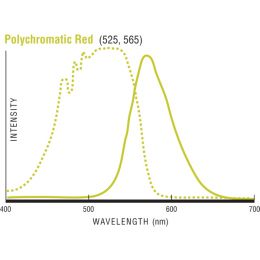 Fluoresbrite® Polychromatic Red Microspheres 2.0µmCatalog Number 19508
Fluoresbrite® Polychromatic Red Microspheres 2.0µmCatalog Number 19508Fluoresbrite® Polychromatic Red Microspheres will fluoresce in different colors, depending on the light source and filters used. When viewed under a UV light source, the beads will appear as vivid orange. Microscopic viewing using a 475-490nm filter shows an extremely bright red fluorescence, while use of a 545-610nm filter yields a yellow fluorescence with excitation maxima of 491nm and 512nm and emission maxima at 554nm.
-
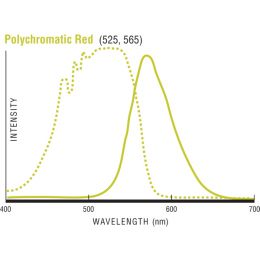 Fluoresbrite® Polychromatic Red Microspheres 6.0µmCatalog Number 19111
Fluoresbrite® Polychromatic Red Microspheres 6.0µmCatalog Number 19111Fluoresbrite® Polychromatic Red Microspheres will fluoresce in different colors, depending on the light source and filters used. When viewed under a UV light source, the beads will appear as vivid orange. Microscopic viewing using a 475-490nm filter shows an extremely bright red fluorescence, while use of a 545-610nm filter yields a yellow fluorescence with excitation maxima of 491nm and 512nm and emission maxima at 554nm.
-
 Fluoresbrite® PolyFluor® 345 MicrospheresCatalog Number 24055
Fluoresbrite® PolyFluor® 345 MicrospheresCatalog Number 24055These fluorescent microspheres incorporate a series of polymerizable fluorescent compounds which produce fluorescence at a variety of wavelengths. The microspheres listed below have a nominal diameter of 1µm. The fluorescence is uniformly distributed throughout the outer 25% of the radii of the particles.
-
 Fluoresbrite® PolyFluor® 394 MicrospheresCatalog Number 24056
Fluoresbrite® PolyFluor® 394 MicrospheresCatalog Number 24056These fluorescent microspheres incorporate a series of polymerizable fluorescent compounds which produce fluorescence at a variety of wavelengths. The microspheres listed below have a nominal diameter of 1µm. The fluorescence is uniformly distributed throughout the outer 25% of the radii of the particles.
-
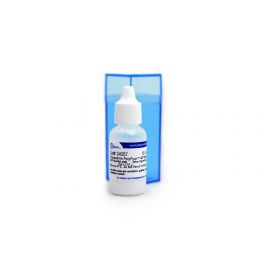 Fluoresbrite® PolyFluor® 407 MicrospheresCatalog Number 24057
Fluoresbrite® PolyFluor® 407 MicrospheresCatalog Number 24057These fluorescent microspheres incorporate a series of polymerizable fluorescent compounds which produce fluorescence at a variety of wavelengths. The microspheres listed below have a nominal diameter of 1µm. The fluorescence is uniformly distributed throughout the outer 25% of the radii of the particles.
-
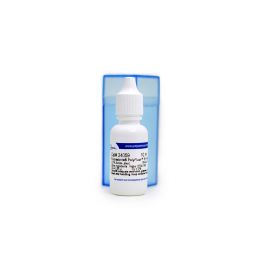 Fluoresbrite® PolyFluor® 511 MicrospheresCatalog Number 24059
Fluoresbrite® PolyFluor® 511 MicrospheresCatalog Number 24059These fluorescent microspheres incorporate a series of polymerizable fluorescent compounds which produce fluorescence at a variety of wavelengths. These microspheres have a nominal diameter of 1µm. The fluorescence is uniformly distributed throughout the outer 25% of the radii of the particle.
-
 Fluoresbrite® PolyFluor® 570 MicrospheresCatalog Number 24061
Fluoresbrite® PolyFluor® 570 MicrospheresCatalog Number 24061These fluorescent microspheres incorporate a series of polymerizable fluorescent compounds which produce fluorescence at a variety of wavelengths. The microspheres listed below have a nominal diameter of 1µm. The fluorescence is uniformly distributed throughout the outer 25% of the radii of the particles.
-
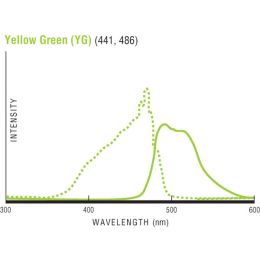 Fluoresbrite® YG Carboxylate Microspheres 0.75µmCatalog Number 07766
Fluoresbrite® YG Carboxylate Microspheres 0.75µmCatalog Number 07766Fluoresbrite® carboxylate microspheres are fluorescent monodispersed polystyrene microspheres that have carboxylate groups on their surfaces which can be activated for the covalent coupling of proteins. Polysciences’ Fluoresbrite® particles are used worldwide in phagocytosis and neural retrograde transport studies, and as markers for cell bound antigens. These microspheres are packaged as 2.5% aqueous suspensions.
-
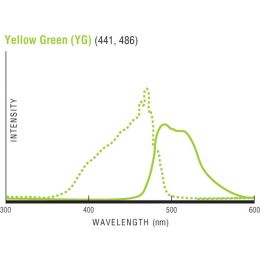 Fluoresbrite® YG Carboxylate Microspheres 0.20µmCatalog Number 09834
Fluoresbrite® YG Carboxylate Microspheres 0.20µmCatalog Number 09834Fluoresbrite® carboxylate microspheres are fluorescent monodispersed polystyrene microspheres that have carboxylate groups on their surfaces which can be activated for the covalent coupling of proteins. Polysciences’ Fluoresbrite® particles are used worldwide in phagocytosis and neural retrograde transport studies, and as markers for cell bound antigens. These microspheres are packaged as 2.5% aqueous suspensions.
-
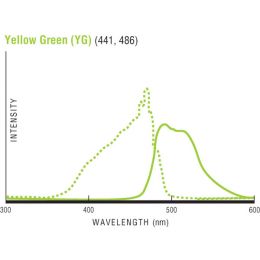 Fluoresbrite® YG Carboxylate Microspheres 0.10µmCatalog Number 16662
Fluoresbrite® YG Carboxylate Microspheres 0.10µmCatalog Number 16662Fluoresbrite® carboxylate microspheres are fluorescent monodispersed polystyrene microspheres that have carboxylate groups on their surfaces which can be activated for the covalent coupling of proteins. Polysciences’ Fluoresbrite® particles are used worldwide in phagocytosis and neural retrograde transport studies, and as markers for cell bound antigens. These microspheres are packaged as 2.5% aqueous suspensions.
-
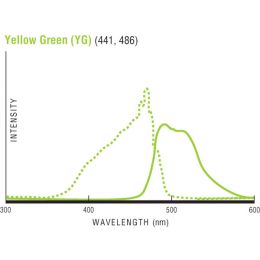 Fluoresbrite® YG Carboxylate Microspheres 0.30μmCatalog Number 24051
Fluoresbrite® YG Carboxylate Microspheres 0.30μmCatalog Number 24051Fluoresbrite® carboxylate microspheres are fluorescent monodispersed polystyrene microspheres that have carboxylate groups on their surfaces which can be activated for the covalent coupling of proteins. Polysciences’ Fluoresbrite® particles are used worldwide in phagocytosis and neural retrograde transport studies, and as markers for cell bound antigens. These microspheres are packaged as 2.5% aqueous suspensions.
-
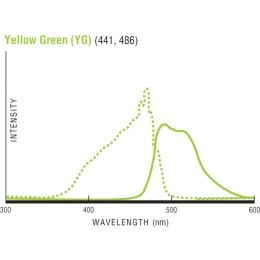 Fluoresbrite® YG Carboxylate Microspheres 0.35μmCatalog Number 24052
Fluoresbrite® YG Carboxylate Microspheres 0.35μmCatalog Number 24052Fluoresbrite® carboxylate microspheres are fluorescent monodispersed polystyrene microspheres that have carboxylate groups on their surfaces which can be activated for the covalent coupling of proteins. Polysciences’ Fluoresbrite® particles are used worldwide in phagocytosis and neural retrograde transport studies, and as markers for cell bound antigens. These microspheres are packaged as 2.5% aqueous suspensions.
-
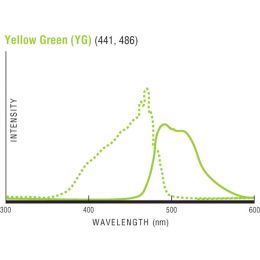 Fluoresbrite® YG Carboxylate Microspheres 0.40μmCatalog Number 24053
Fluoresbrite® YG Carboxylate Microspheres 0.40μmCatalog Number 24053Fluoresbrite® carboxylate microspheres are fluorescent monodispersed polystyrene microspheres that have carboxylate groups on their surfaces which can be activated for the covalent coupling of proteins. Polysciences’ Fluoresbrite® particles are used worldwide in phagocytosis and neural retrograde transport studies, and as markers for cell bound antigens. These microspheres are packaged as 2.5% aqueous suspensions.
-
 Fluoresbrite® YG Carboxylate Microspheres 1.50µmCatalog Number 09719
Fluoresbrite® YG Carboxylate Microspheres 1.50µmCatalog Number 09719Fluoresbrite® carboxylate microspheres are fluorescent monodispersed polystyrene microspheres that have carboxylate groups on their surfaces which can be activated for the covalent coupling of proteins. Polysciences’ Fluoresbrite® particles are used worldwide in phagocytosis and neural retrograde transport studies, and as markers for cell bound antigens. These microspheres are packaged as 2.5% aqueous suspensions.
-
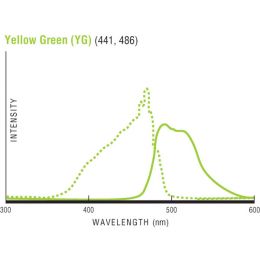 Fluoresbrite® YG Carboxylate Microspheres 1.00µmCatalog Number 15702
Fluoresbrite® YG Carboxylate Microspheres 1.00µmCatalog Number 15702Fluoresbrite® carboxylate microspheres are fluorescent monodispersed polystyrene microspheres that have carboxylate groups on their surfaces which can be activated for the covalent coupling of proteins. Polysciences’ Fluoresbrite® particles are used worldwide in phagocytosis and neural retrograde transport studies, and as markers for cell bound antigens.
-
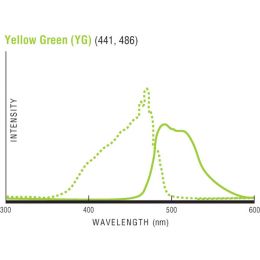 Fluoresbrite® YG Carboxylate Microspheres 2.00µmCatalog Number 09847
Fluoresbrite® YG Carboxylate Microspheres 2.00µmCatalog Number 09847Fluoresbrite® carboxylate microspheres are fluorescent monodispersed polystyrene microspheres that have carboxylate groups on their surfaces which can be activated for the covalent coupling of proteins. Polysciences’ Fluoresbrite® particles are used worldwide in phagocytosis and neural retrograde transport studies, and as markers for cell bound antigens.
-
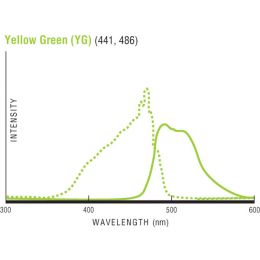 Fluoresbrite® YG Carboxylate Microspheres 0.05µmCatalog Number 16661
Fluoresbrite® YG Carboxylate Microspheres 0.05µmCatalog Number 16661Fluoresbrite® carboxylate microspheres are fluorescent monodispersed polystyrene microspheres that have carboxylate groups on their surfaces which can be activated for the covalent coupling of proteins. Polysciences’ Fluoresbrite® particles are used worldwide in phagocytosis and neural retrograde transport studies, and as markers for cell bound antigens. These microspheres are packaged as 2.5% aqueous suspensions.
-
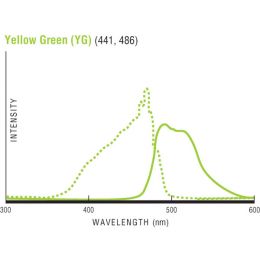 Fluoresbrite® YG Carboxylate Microspheres 6.00µmCatalog Number 18141
Fluoresbrite® YG Carboxylate Microspheres 6.00µmCatalog Number 18141Fluoresbrite® carboxylate microspheres are fluorescent monodispersed polystyrene microspheres that have carboxylate groups on their surfaces which can be activated for the covalent coupling of proteins. Polysciences’ Fluoresbrite® particles are used worldwide in phagocytosis and neural retrograde transport studies, and as markers for cell bound antigens. These microspheres are packaged as 2.5% aqueous suspensions.
-
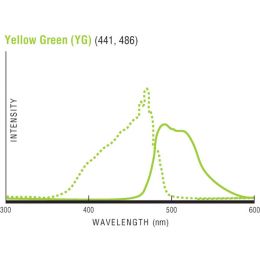 Fluoresbrite® YG Carboxylate Microspheres 3.00µmCatalog Number 17147
Fluoresbrite® YG Carboxylate Microspheres 3.00µmCatalog Number 17147Fluoresbrite® carboxylate microspheres are fluorescent monodispersed polystyrene microspheres that have carboxylate groups on their surfaces which can be activated for the covalent coupling of proteins. Polysciences’ Fluoresbrite® particles are used worldwide in phagocytosis and neural retrograde transport studies, and as markers for cell bound antigens. These microspheres are packaged as 2.5% aqueous suspensions.
-
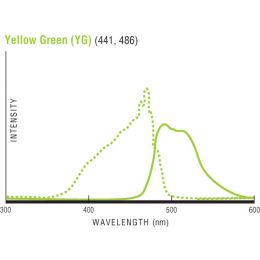 Fluoresbrite® YG Carboxylate Microspheres 4.50µmCatalog Number 16592
Fluoresbrite® YG Carboxylate Microspheres 4.50µmCatalog Number 16592Fluoresbrite® carboxylate microspheres are fluorescent monodispersed polystyrene microspheres that have carboxylate groups on their surfaces which can be activated for the covalent coupling of proteins. Polysciences’ Fluoresbrite® particles are used worldwide in phagocytosis and neural retrograde transport studies, and as markers for cell bound antigens. These microspheres are packaged as 2.5% aqueous suspensions.
-
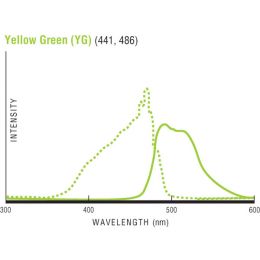 Fluoresbrite® YG Carboxylate Microspheres 0.50µmCatalog Number 15700
Fluoresbrite® YG Carboxylate Microspheres 0.50µmCatalog Number 15700Fluoresbrite® carboxylate microspheres are fluorescent monodispersed polystyrene microspheres that have carboxylate groups on their surfaces which can be activated for the covalent coupling of proteins. Polysciences’ Fluoresbrite® particles are used worldwide in phagocytosis and neural retrograde transport studies, and as markers for cell bound antigens. These microspheres are packaged in 2.5% aqueous suspensions.
-
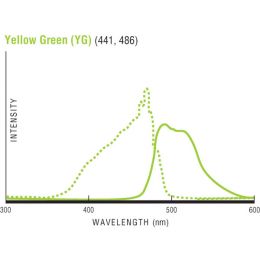 Fluoresbrite® YG Carboxylate Microspheres 1.75µmCatalog Number 17687
Fluoresbrite® YG Carboxylate Microspheres 1.75µmCatalog Number 17687Fluoresbrite® carboxylate microspheres are fluorescent monodispersed polystyrene microspheres that have carboxylate groups on their surfaces which can be activated for the covalent coupling of proteins. Polysciences’ Fluoresbrite® particles are used worldwide in phagocytosis and neural retrograde transport studies, and as markers for cell bound antigens. These microspheres are packaged as 2.5% aqueous suspensions.
-
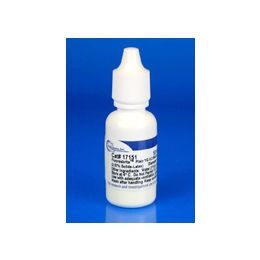 Fluoresbrite® YG Microspheres 0.20µmCatalog Number 17151
Fluoresbrite® YG Microspheres 0.20µmCatalog Number 17151Fluoresbrite® Yellow Green Microspheres have excitation and emission spectra similar to FITC with excitation maxima of 441nm and emission maxima at 485nm. They are one of the brightest microspheres available at this wavelength and are used extensively in phagocytosis studies, flow cytometry and diagnostic assays.
-
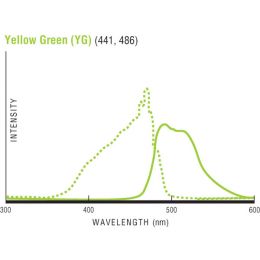 Fluoresbrite® YG Microspheres 0.75µmCatalog Number 17153
Fluoresbrite® YG Microspheres 0.75µmCatalog Number 17153Fluoresbrite® Yellow Green Microspheres have excitation and emission spectra similar to FITC with excitation maxima of 441nm and emission maxima at 485nm. They are one of the brightest microspheres available at this wavelength and are used extensively in phagocytosis studies, flow cytometry and diagnostic assays.
-
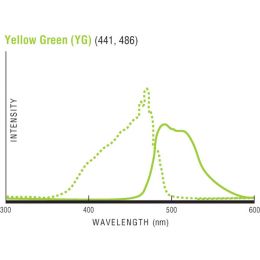 Fluoresbrite® YG Microspheres 0.05µmCatalog Number 17149
Fluoresbrite® YG Microspheres 0.05µmCatalog Number 17149Fluoresbrite® Yellow Green Microspheres have excitation and emission spectra similar to FITC with excitation maxima of 441nm and emission maxima at 485nm. They are one of the brightest microspheres available at this wavelength and are used extensively in phagocytosis studies, flow cytometry and diagnostic assays.
-
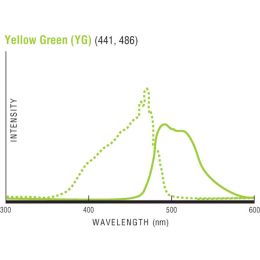 Fluoresbrite® YG Microspheres 3.00µmCatalog Number 17155
Fluoresbrite® YG Microspheres 3.00µmCatalog Number 17155Fluoresbrite® Yellow Green Microspheres have excitation and emission spectra similar to FITC with excitation maxima of 441nm and emission maxima at 485nm. They are one of the brightest microspheres available at this wavelength and are used extensively in phagocytosis studies, flow cytometry and diagnostic assays.
-
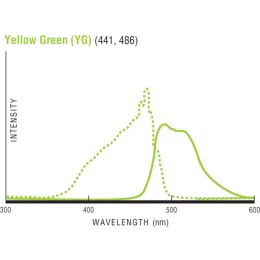 Fluoresbrite® YG Microspheres 6.00µmCatalog Number 17156
Fluoresbrite® YG Microspheres 6.00µmCatalog Number 17156Fluoresbrite® Yellow Green Microspheres have excitation and emission spectra similar to FITC with excitation maxima of 441nm and emission maxima at 485nm. They are one of the brightest microspheres available at this wavelength and are used extensively in phagocytosis studies, flow cytometry and diagnostic assays.
-
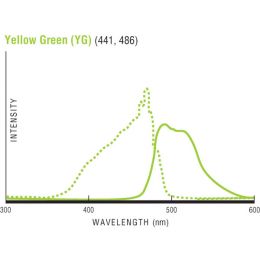 Fluoresbrite® YG Microspheres 10.0µmCatalog Number 18140
Fluoresbrite® YG Microspheres 10.0µmCatalog Number 18140Fluoresbrite® Yellow Green Microspheres have excitation and emission spectra similar to FITC with excitation maxima of 441nm and emission maxima at 485nm. They are one of the brightest microspheres available at this wavelength and are used extensively in phagocytosis studies, flow cytometry and diagnostic assays.
-
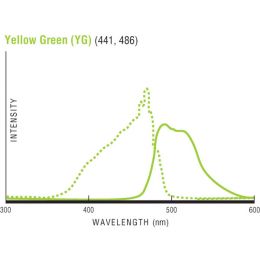 Fluoresbrite® YG Microspheres 25.0µmCatalog Number 18241
Fluoresbrite® YG Microspheres 25.0µmCatalog Number 18241Fluoresbrite® Yellow Green Microspheres have excitation and emission spectra similar to FITC with excitation maxima of 441nm and emission maxima at 485nm. They are one of the brightest microspheres available at this wavelength and are used extensively in phagocytosis studies, flow cytometry and diagnostic assays.
-
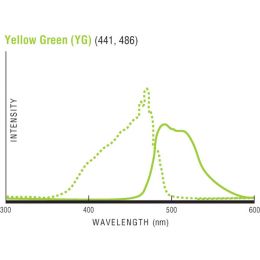 Fluoresbrite® YG Microspheres 45.0µmCatalog Number 18242
Fluoresbrite® YG Microspheres 45.0µmCatalog Number 18242Fluoresbrite® Yellow Green Microspheres have excitation and emission spectra similar to FITC with excitation maxima of 441nm and emission maxima at 485nm. They are one of the brightest microspheres available at this wavelength and are used extensively in phagocytosis studies, flow cytometry and diagnostic assays.
-
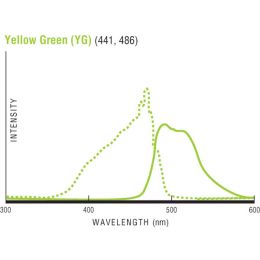 Fluoresbrite® YG Microspheres 90.0µmCatalog Number 18243
Fluoresbrite® YG Microspheres 90.0µmCatalog Number 18243Fluoresbrite® Yellow Green Microspheres have excitation and emission spectra similar to FITC with excitation maxima of 441nm and emission maxima at 485nm. They are one of the brightest microspheres available at this wavelength and are used extensively in phagocytosis studies, flow cytometry and diagnostic assays.
-
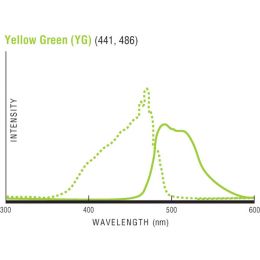 Fluoresbrite® YG Microspheres 2.00µmCatalog Number 18338
Fluoresbrite® YG Microspheres 2.00µmCatalog Number 18338Fluoresbrite® Yellow Green Microspheres have excitation and emission spectra similar to FITC with excitation maxima of 441nm and emission maxima at 485nm. They are one of the brightest microspheres available at this wavelength and are used extensively in phagocytosis studies, flow cytometry and diagnostic assays.
-
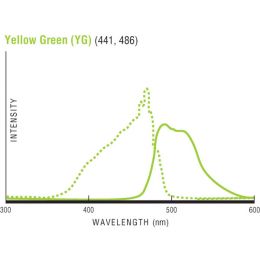 Fluoresbrite® YG Microspheres 20.0µmCatalog Number 19096
Fluoresbrite® YG Microspheres 20.0µmCatalog Number 19096Fluoresbrite® Yellow Green Microspheres have excitation and emission spectra similar to FITC with excitation maxima of 441nm and emission maxima at 485nm. They are one of the brightest microspheres available at this wavelength and are used extensively in phagocytosis studies, flow cytometry and diagnostic assays.
-
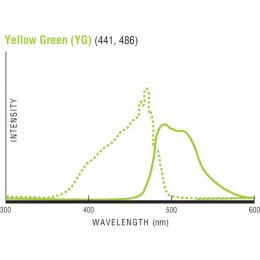 Fluoresbrite® YG Microspheres, Calibration Grade 0.50μmCatalog Number 18859
Fluoresbrite® YG Microspheres, Calibration Grade 0.50μmCatalog Number 18859This special grade of Fluoresbrite® Yellow Green Microspheres has been evaluated both for particle diameter, as well as the uniformity of the fluorescent dye distribution. Instrument manufacturers have demanded these high quality particles for their flow cytometry standards.
-
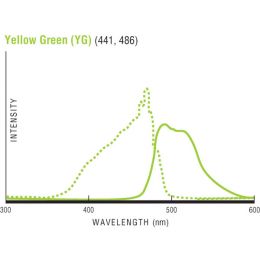 Fluoresbrite® YG Microspheres, Calibration Grade 1.00μmCatalog Number 18860
Fluoresbrite® YG Microspheres, Calibration Grade 1.00μmCatalog Number 18860This special grade of Fluoresbrite® Yellow Green Microspheres has been evaluated both for particle diameter, as well as the uniformity of the fluorescent dye distribution. Instrument manufacturers have demanded these high quality particles for their flow cytometry standards.
-
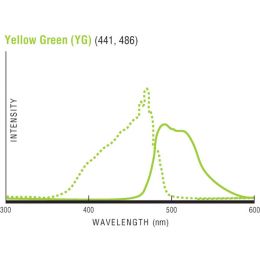 Fluoresbrite® YG Microspheres, Calibration Grade 2.00μmCatalog Number 18604
Fluoresbrite® YG Microspheres, Calibration Grade 2.00μmCatalog Number 18604This special grade of Fluoresbrite® Yellow Green Microspheres has been evaluated both for particle diameter, as well as the uniformity of the fluorescent dye distribution. Instrument manufacturers have demanded these high quality particles for their flow cytometry standards.
-
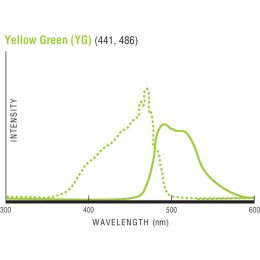 Fluoresbrite® YG Microspheres, Calibration Grade 3.00μmCatalog Number 18861
Fluoresbrite® YG Microspheres, Calibration Grade 3.00μmCatalog Number 18861This special grade of Fluoresbrite® Yellow Green Microspheres has been evaluated both for particle diameter, as well as the uniformity of the fluorescent dye distribution. Instrument manufacturers have demanded these high quality particles for their flow cytometry standards.
-
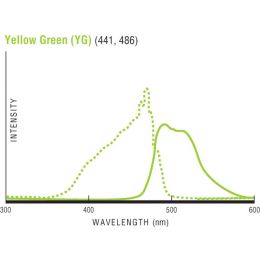 Fluoresbrite® YG Microspheres, Calibration Grade 6.00μmCatalog Number 18862
Fluoresbrite® YG Microspheres, Calibration Grade 6.00μmCatalog Number 18862This special grade of Fluoresbrite® Yellow Green Microspheres has been evaluated both for particle diameter, as well as the uniformity of the fluorescent dye distribution. Instrument manufacturers have demanded these high quality particles for their flow cytometry standards.
-
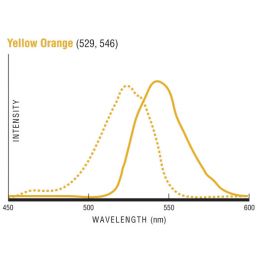 Fluoresbrite® YO Carboxylate Microspheres 0.10µmCatalog Number 18719
Fluoresbrite® YO Carboxylate Microspheres 0.10µmCatalog Number 18719Fluoresbrite® carboxylate microspheres are fluorescent monodispersed polystyrene microspheres that have carboxylate groups on their surfaces which can be activated for the covalent coupling of proteins. Polysciences’ Fluoresbrite® particles are used worldwide in phagocytosis and neural retrograde transport studies, and as markers for cell bound antigens. These microspheres are packaged as 2.5% aqueous suspensions. YO has limited water solubility, and some leaching may occur with rigorous washing.
-
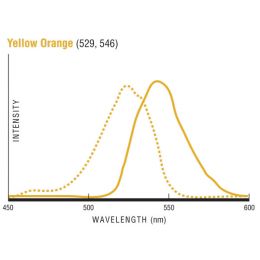 Fluoresbrite® YO Carboxylate Microspheres 0.50µmCatalog Number 18720
Fluoresbrite® YO Carboxylate Microspheres 0.50µmCatalog Number 18720Fluoresbrite® carboxylate microspheres are fluorescent monodispersed polystyrene microspheres that have carboxylate groups on their surfaces which can be activated for the covalent coupling of proteins. Polysciences’ Fluoresbrite® particles are used worldwide in phagocytosis and neural retrograde transport studies, and as markers for cell bound antigens. These microspheres are packaged as 2.5% aqueous suspensions. YO has limited water solubility, and some leaching may occur with rigorous washing.
-
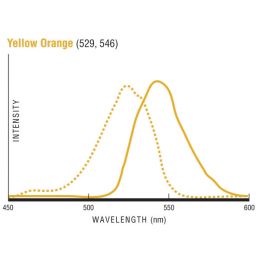 Fluoresbrite® YO Carboxylate Microspheres 6.00µmCatalog Number 19395
Fluoresbrite® YO Carboxylate Microspheres 6.00µmCatalog Number 19395Fluoresbrite® carboxylate microspheres are fluorescent monodispersed polystyrene microspheres that have carboxylate groups on their surfaces which can be activated for the covalent coupling of proteins. Polysciences’ Fluoresbrite® particles are used worldwide in phagocytosis and neural retrograde transport studies, and as markers for cell bound antigens. These microspheres are packaged as 2.5% aqueous suspensions. YO has limited water solubility, and some leaching may occur with rigorous washing.
-
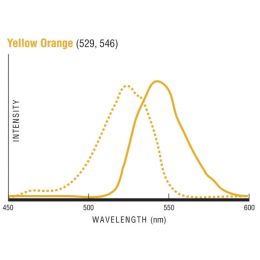 Fluoresbrite® YO Carboxylate Microspheres 0.05µmCatalog Number 19775
Fluoresbrite® YO Carboxylate Microspheres 0.05µmCatalog Number 19775Fluoresbrite® carboxylate microspheres are fluorescent monodispersed polystyrene microspheres that have carboxylate groups on their surfaces which can be activated for the covalent coupling of proteins. Polysciences’ Fluoresbrite® particles are used worldwide in phagocytosis and neural retrograde transport studies, and as markers for cell bound antigens. These microspheres are packaged as 2.5% aqueous suspensions. YO has limited water solubility, and some leaching may occur with rigorous washing.
-
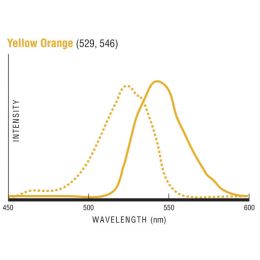 Fluoresbrite® YO Carboxylate Microspheres 3.00µmCatalog Number 19393
Fluoresbrite® YO Carboxylate Microspheres 3.00µmCatalog Number 19393Fluoresbrite® carboxylate microspheres are fluorescent monodispersed polystyrene microspheres that have carboxylate groups on their surfaces which can be activated for the covalent coupling of proteins. Polysciences’ Fluoresbrite® particles are used worldwide in phagocytosis and neural retrograde transport studies, and as markers for cell bound antigens. These microspheres are packaged as 2.5% aqueous suspensions. YO has limited water solubility, and some leaching may occur with rigorous washing.
-
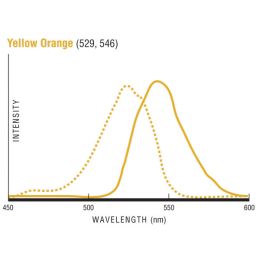 Fluoresbrite® YO Carboxylate Microspheres 4.50µmCatalog Number 19394
Fluoresbrite® YO Carboxylate Microspheres 4.50µmCatalog Number 19394Fluoresbrite® carboxylate microspheres are fluorescent monodispersed polystyrene microspheres that have carboxylate groups on their surfaces which can be activated for the covalent coupling of proteins. Polysciences’ Fluoresbrite® particles are used worldwide in phagocytosis and neural retrograde transport studies, and as markers for cell bound antigens. These microspheres are packaged as 2.5% aqueous suspensions. YO has limited water solubility, and some leaching may occur with rigorous washing.
-
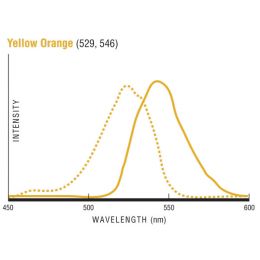 Fluoresbrite® YO Carboxylate Microspheres 1.75µmCatalog Number 19392
Fluoresbrite® YO Carboxylate Microspheres 1.75µmCatalog Number 19392Fluoresbrite® carboxylate microspheres are fluorescent monodispersed polystyrene microspheres that have carboxylate groups on their surfaces which can be activated for the covalent coupling of proteins. Polysciences’ Fluoresbrite® particles are used worldwide in phagocytosis and neural retrograde transport studies, and as markers for cell bound antigens. These microspheres are packaged as 2.5% aqueous suspensions. YO has limited water solubility, and some leaching may occur with rigorous washing.
Fluorescent Polystyrene Microspheres
